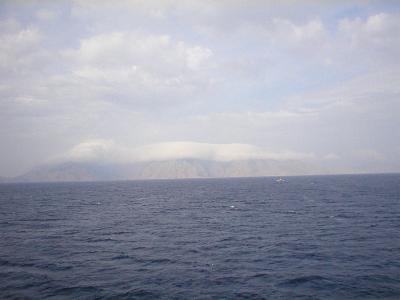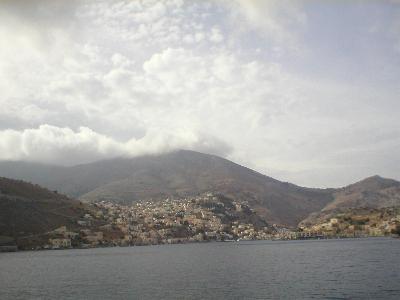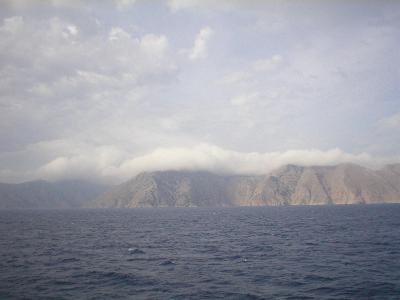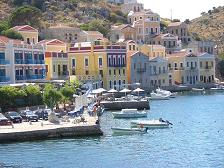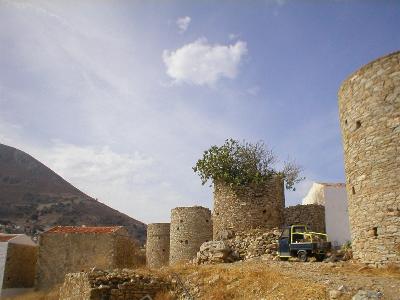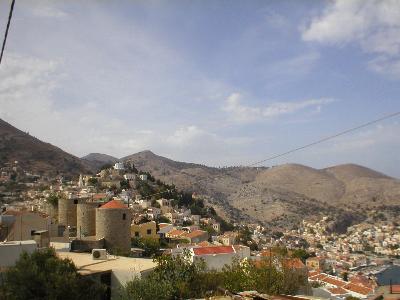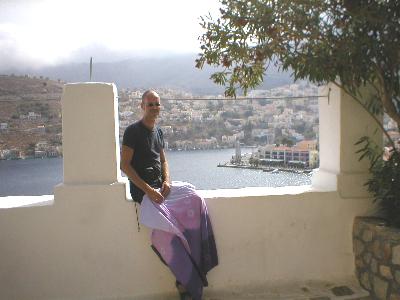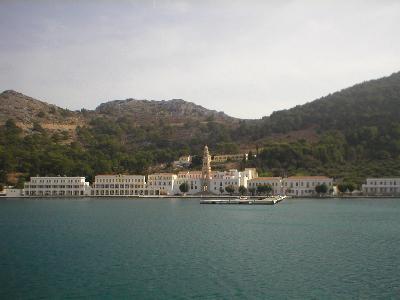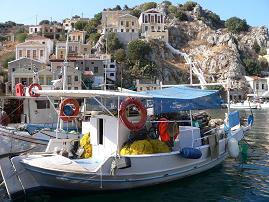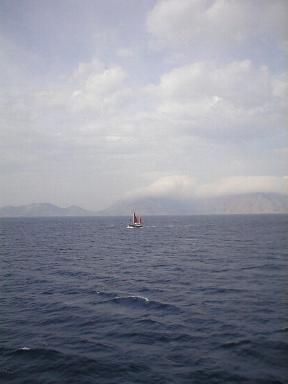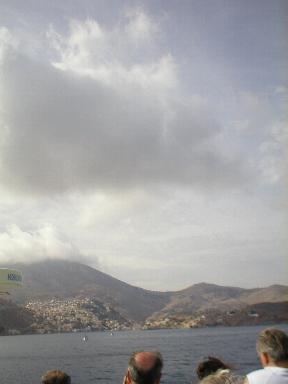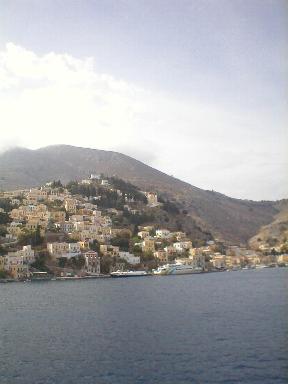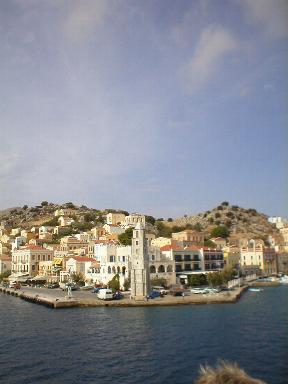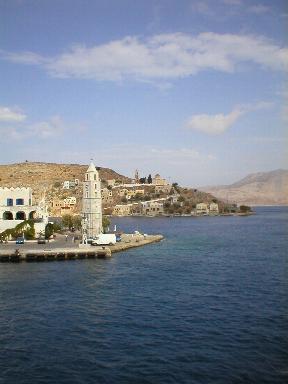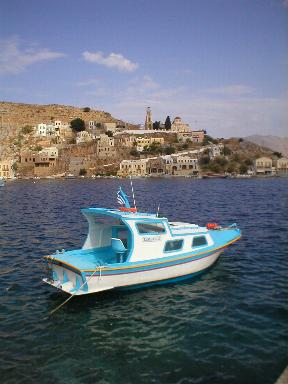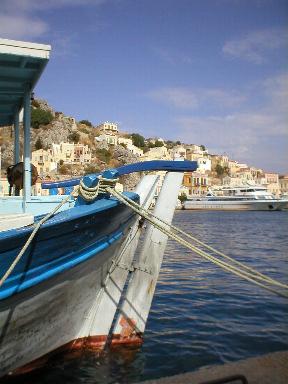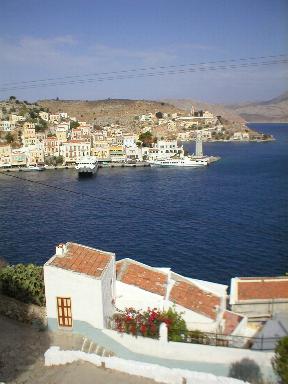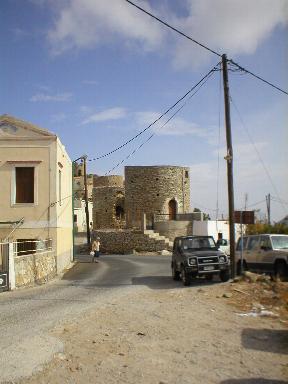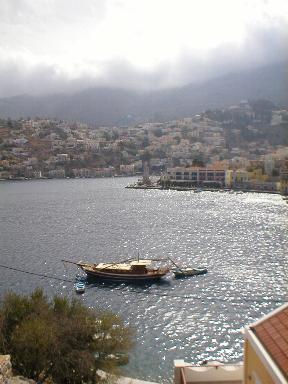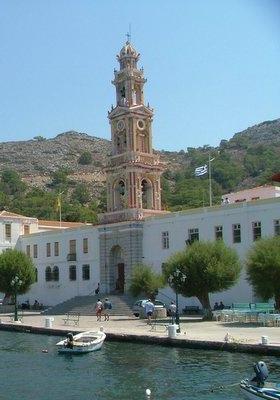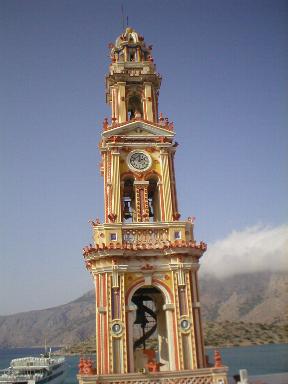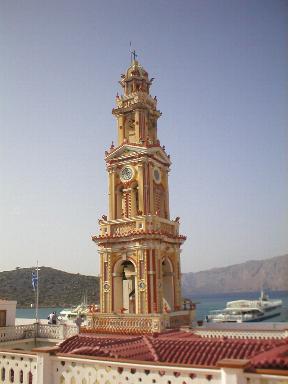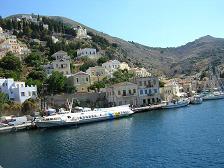|
|
 THE ISLAND OF SYMI
THE ISLAND OF SYMI

Symi is an island thar I enjoyed immediately. Not only does it look beautiful from a distance, but also as soon as the ferry turns into the bay and you suddenly see the main town, is very impressive. I found it one of the nicest and prettiest villages on the Greek islands that I have ever visited, together with Skopelos town and Mykonos Chora.
Symi is a busy daytrip destination for vistors from the island of Rhodes. In the early morning hours and after the boats have returned to Rhodes the peace falls back over the village. In the future years it is unlikely that Symi will develop as a major tourist attraction because of a lack of beaches. Almost all beaches on Symi, with a few exceptions, can only be reaches by watertaxi or special small boats.
Symi
Simi (also spelled as Symi) with its capitol with the same name, is a small Greek island in the Dodecanese. Its highest peak is at 616 meters.
It is situated northwest of Rhodes, just in front of the coast of Turkey, and it is a mountainess island. In the year 2000 the island had about 2500 inhabitants. Symi has a long history and Homerus already mentioned it because it contributed 3 ships on behalf of the island to help in the Trojan war.
Nowadays the island is mainly known for its natural sponges and for its picturesque Symi town, that is build in neo-classical style.
Emborios is the second harbour of the island. In Panormitis you can see the monastery of Archontas Michael. This monastery is build on the spot where in ancient times there was a temple for Poseidon.
Symi can be easily reaches by boat from Rhodes, but on the island there is relatively little accommodation.
Sponges
At around 1850 the demand for sponges increased. Because of this it became lucrative busines on many of the islands in the Dodecanese to look for natural sponges. This job was not without danger. The divers brought the sponges to the surface that were soemtimes on a depth of 70 meters. Many of these divers suffered from illnesses. It was also a way to make quick money.
At the end of the 20th century the sponge trade ended. Because of an unknow disease the majority of the sponges in the Aegean Sea was killed.
|

